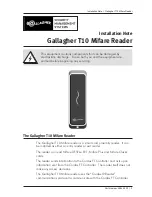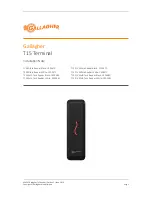
13
CHAPTER 3: Card Setup
3. Card Setup
Table 3-1 lists the addresses for the card.
Table 3-1. The card’s address assignments.
Address Mode
D7
D6
D5
D4
D3
D2
D1
D0
Base+0 RD/WR PAD7
PAD6
PAD5
PAD4
PAD3
PAD2 PAD1 PAD0
Base+1 RD/WR PBD7
PBD6
PBD5
PBD4
PBD3
PBD2 PBD1 PBD0
Base+2 RD/WR PCD7 PCD6
PCD5
PCD4
PCD3
PCD2 PCD1 PCD0
Base+3 RD/WR PDD7 PDD6
PDD5
PDD4
PDD3
PDD2 PDD1 PDD0
Base+4 RD/WR {0}
{0}
{0}
{0}
{0}
{0}
{0}
{0}
Base+5 RD/WR IRQEN IRQST
{0}
{0}
{0}
{0}
1RC1 1RC0
Base+6 RD only {0}
{0}
{0}
{0}
{0}
{0}
{0}
{0}
Base+7 RD only {0}
{0}
{0}
{0}
{0}
{0}
{0}
{0}
NOTE
All ports are set to input after reset or power-up. Interrupt source is
Base+0 bit D0. When selecting the Interrupt Mode, always disable
interrupts before changing or setting states. This will help prevent
inadvertent or unexpected interrupts from occurring. When using the
high- and low-level interrupts, a change in state of the input must occur
before the interrupt can be cleared. The device providing the input to
Base+0, bit D0, must do this.
PAD0–7
=Port A (Base+0)
PBD0–7
=Port B (Base+1)
PCD0–7
=Port C (Base+2)
PDD0–7
=Port D (Base+3)
IRC0–1
=Interrupt Mode select (Base+5)
IRC1
IRC0
0
0
low level
0
1
high level
1
0
falling edge
1
1
rising edge
IRQEN
=enable interrupts (Base+5)
0=disabled
1=enabled (disabled after reset or power-up)
IRQST
=interrupt status (Base+5)
1=interrupt pending (reading the bit clears
interrupt)





































